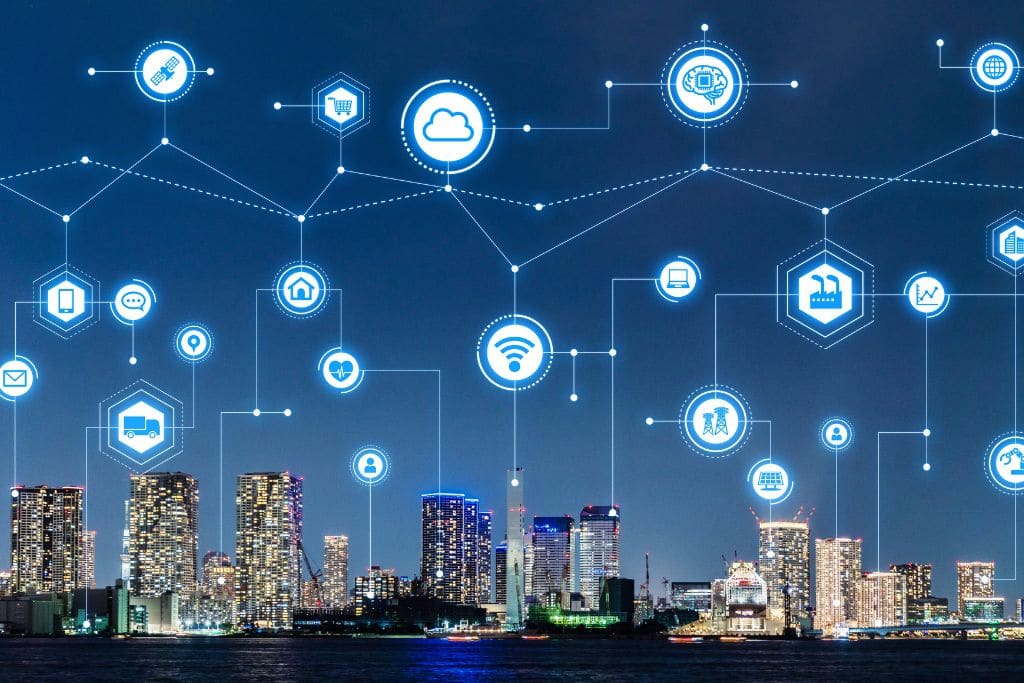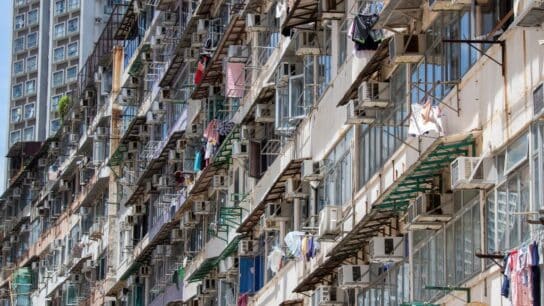The Smart City concept has become a key factor in sustainable urban development. It is a compilation of urban planning strategies with lots of far-reaching benefits, including efficient distribution of resources, speed of policy implementations, seamless communication, and a range of environmental benefits. Today, smart cities are blooming in every corner of the globe, with Singapore, Copenhagen, Amsterdam, and Oslo as indisputable frontrunners for this new trend. Here are four major smart city technologies that are gaining considerable traction and are universally adopted in the modern evolution of smart cities.
—
4 Smart City Technologies
1. Smart IoT Devices
The novel application of the Internet of Things (IoT) has enabled smart city practices on a global scale. This modern technology equips the city with the capability of monitoring, controlling, and managing urban facilities and devices remotely, as well as creating new insights and actionable information from quantitative streams of real-time data. IoT has its underlying significance in the overall development of smart cities, particularly in the enhancement of urban interconnectivity. These IoT devices contain smart sensors, actuators, monitoring devices, and AI programmes through which a city can substantially improve its urban accessibility and mobility, promote social inclusiveness, increase energy efficiency, and, eventually, reach the goal of practising sustainability.
A typical example of IoT in smart cities is the intelligent sensors on the streetlights in Oslo. The Oslo Smart Street Lighting project is a citywide program that aims to improve the street lighting system’s efficiency. Oslo integrated the city’s street lighting into a single, remotely accessible network that enables lighting level management and monitoring using Internet-based apps. The E-Street system can adjust light intensity according to the time of the year and needs in specific situations, bringing on further optimisation of the city’s energy use. Oslo’s 20,000 intelligent streetlights have contributed to a total energy saving of nearly 70%.
Citizens are more encouraged to be involved in the urban ecology with the wide usage of smartphones and mobile devices. As IoT technologies gradually progress and expand, citizens and governments are bound to be connected in ways that no one has ever witnessed before.
However, challenges and controversies come along with tremendous benefits and opportunities, putting the debate between public space and individual privacy in the spotlight. Aggressive public data gathering in smart cities can pose a threat to the citizens’ privacy, leading to increased risk of cyber attacks but also high cost and data discrimination. It is estimated that, over the next 20 years, cities will invest a total of roughly US$41 trillion on infrastructure upgrades. Future urban planners and policymakers would have no choice but to guarantee to the public that such dark sides of IoT technologies do not affect the ethical and normal functioning of the city.
You Might Also Like: What is A Smart City?
2. Smart Energy
Urban sustainability is a vital component of smart cities. To achieve it, it is imperative to invest in an efficient and environmentally-friendly energy management.
With rapidly growing urban clusters in recent decades, demand for energy supplies has skyrocketed. It is sometimes so high that it exceeds the availability of their local resources. A long-term solution to meet the rising energy demand is the so-called smart energy chain, which relies entirely on renewable energy sources such as solar and wind power. This system allows to transmit decentralised clean and sustainable energy to every corner of the urban area through an intelligent digital-based system.
One of the most emblematic and visionary illustrations of smart energy is the EnergyLab Nordhavn project in the city of Copenhagen. In order to reach carbon neutrality by 2050, the city has started building a huge smart energy network. The initiative aims to address the problem of enhancing flexibility in the energy network that is increasingly reliant on intermittent energy sources. It does so by testing large batteries and electric vehicles to reduce peak load on the grid and deploying intelligent heating in 85 housing units to reduce the burden on the heating circuit while simultaneously boosting indoor comfortability. So far, more than 7,000 homes in the urban district are benefiting from this initiative.
Although the conceptualisation of smart energy sounds promising as it is, there are still a few ineluctable operational challenges to putting it into practice. The accuracy of energy-measuring smart metres is hard to guarantee at all times and in most cases, such misdetections can lead to chronic energy waste and go against the goal of sustainability. Furthermore, integrating the smart energy system into a greater urban operation mechanism is always technically and financially demanding and this makes it potentially unachievable for most developing cities in the near future.
3. Smart Mobility and Transportation
Third on our list of smart city technologies is mobility, the heartbeat of a city. Intelligent urban mobility and transportation networks have been given priority in many smart city initiatives. Urban domains such as multi-modal transportation, smart parking, and smart traffic lights are often included in this concept. This approach is based on the rethinking of the transportation infrastructure used in daily life, including not only traditional automobiles, electric vehicles, and public transit, but also wholly new and innovative forms of transportation such as on-demand ride-sharing services (Uber and Lyft) and car sharing programmes. A city’s urban accessibility and liveability can thus be further built up with such considerations.
Singapore has an unassailable lead in the experiment of smart mobility. The city’s Smart Mobility 2030 is a 15-year master plan that lays out how the country will develop its Intelligent Transportation Systems (ITS). It is a complex transportation network that consists – among others – of Expressway Monitoring and Advisory System, Green Link Determining System, Junction Electronic Eyes, TrafficScan, a parking guidance system, Electronic
Road Pricing, and smart bus stops. The plan’s mission is to use the latest ITS projects and transportation technology breakthroughs to optimise transportation networks and improve commuter travel experiences across Singapore in a sustainable way.
However, for most developing cities, many argue that the case of Singapore does not have much reference significance. To begin with, many communities lack the capacity to mobilise the massive sums of money required to support infrastructure projects. Secondly, urban transportation infrastructure projects are difficult to plan and implement, especially in densely populated areas where land acquisition and resettlement concerns can be exceedingly complicated.
4. Smart Buildings
The blossoming of smart buildings is essential for a smart city’s long-term well-being. A smart building is one that uses digital-based automatic procedures to generate the building’s systems, including lighting, processing equipment, plumbing, access control systems, digital signage, way-finding, and security systems. In a nutshell, it is a building with a dynamic, breathing organism. One remarkable feature of such modern buildings is its climate resilience, which is far-sighted under the context of the worsening climate issues. Buildings with technological advancements can easily reduce resource usage and improve energy efficiency, simplify maintenance, reduce operating costs, and provide a cleaner environment for occupants.
One pioneering example of smart buildings is The Edge in Amsterdam. According to Bloomberg, the Edge is the smartest and greenest building in the world, with the highest sustainability score ever awarded: 98.4%. With some 28,000 sensors equipped inside, every individual inside the construction is connected through a mobile phone application. The most avant-garde feature is that smart buildings can memorise a schedule for every employee, providing them instructions on where to go to make sure they are in the right place at the right time.
As revolutionary as it is, numerous difficulties lie ahead of the future of smart buildings. There are five major concerns put forward by architecture specialists: cost of acquisition and investment barriers, cybersecurity untrust, proper planning and adequate maintenance, insufficient integration and cultural responsiveness. Despite the human-centred nature of smart buildings, the line between digital connectivity and personal privacy deems to be blurred.
If you enjoyed reading about smart city technologies, you might also like: Top 7 Smart Cities in the World


















